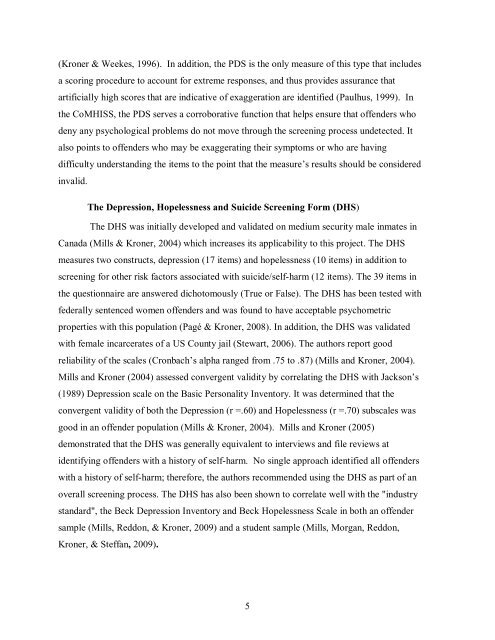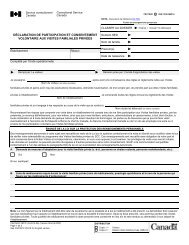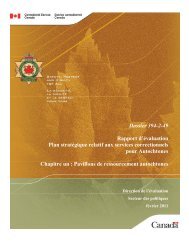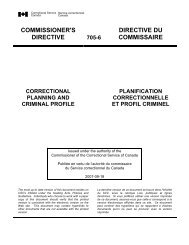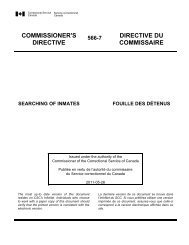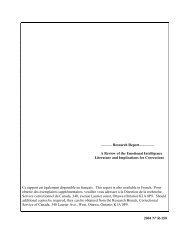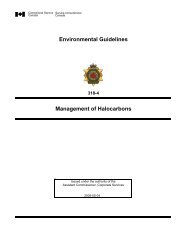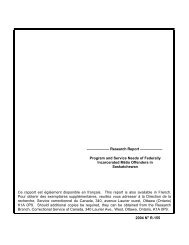The Brief Symptom Inventory (BSI) - Service correctionnel du Canada
The Brief Symptom Inventory (BSI) - Service correctionnel du Canada
The Brief Symptom Inventory (BSI) - Service correctionnel du Canada
You also want an ePaper? Increase the reach of your titles
YUMPU automatically turns print PDFs into web optimized ePapers that Google loves.
(Kroner & Weekes, 1996). In addition, the PDS is the only measure of this type that includes<br />
a scoring proce<strong>du</strong>re to account for extreme responses, and thus provides assurance that<br />
artificially high scores that are indicative of exaggeration are identified (Paulhus, 1999). In<br />
the CoMHISS, the PDS serves a corroborative function that helps ensure that offenders who<br />
deny any psychological problems do not move through the screening process undetected. It<br />
also points to offenders who may be exaggerating their symptoms or who are having<br />
difficulty understanding the items to the point that the measure’s results should be considered<br />
invalid.<br />
<strong>The</strong> Depression, Hopelessness and Suicide Screening Form (DHS)<br />
<strong>The</strong> DHS was initially developed and validated on medium security male inmates in<br />
<strong>Canada</strong> (Mills & Kroner, 2004) which increases its applicability to this project. <strong>The</strong> DHS<br />
measures two constructs, depression (17 items) and hopelessness (10 items) in addition to<br />
screening for other risk factors associated with suicide/self-harm (12 items). <strong>The</strong> 39 items in<br />
the questionnaire are answered dichotomously (True or False). <strong>The</strong> DHS has been tested with<br />
federally sentenced women offenders and was found to have acceptable psychometric<br />
properties with this population (Pagé & Kroner, 2008). In addition, the DHS was validated<br />
with female incarcerates of a US County jail (Stewart, 2006). <strong>The</strong> authors report good<br />
reliability of the scales (Cronbach’s alpha ranged from .75 to .87) (Mills and Kroner, 2004).<br />
Mills and Kroner (2004) assessed convergent validity by correlating the DHS with Jackson’s<br />
(1989) Depression scale on the Basic Personality <strong>Inventory</strong>. It was determined that the<br />
convergent validity of both the Depression (r =.60) and Hopelessness (r =.70) subscales was<br />
good in an offender population (Mills & Kroner, 2004). Mills and Kroner (2005)<br />
demonstrated that the DHS was generally equivalent to interviews and file reviews at<br />
identifying offenders with a history of self-harm. No single approach identified all offenders<br />
with a history of self-harm; therefore, the authors recommended using the DHS as part of an<br />
overall screening process. <strong>The</strong> DHS has also been shown to correlate well with the "in<strong>du</strong>stry<br />
standard", the Beck Depression <strong>Inventory</strong> and Beck Hopelessness Scale in both an offender<br />
sample (Mills, Reddon, & Kroner, 2009) and a student sample (Mills, Morgan, Reddon,<br />
Kroner, & Steffan, 2009).<br />
5


